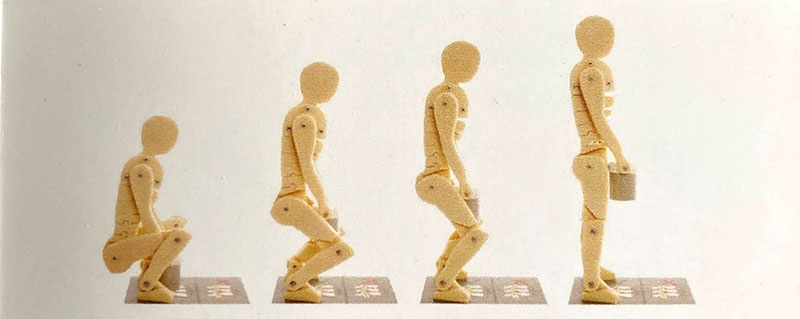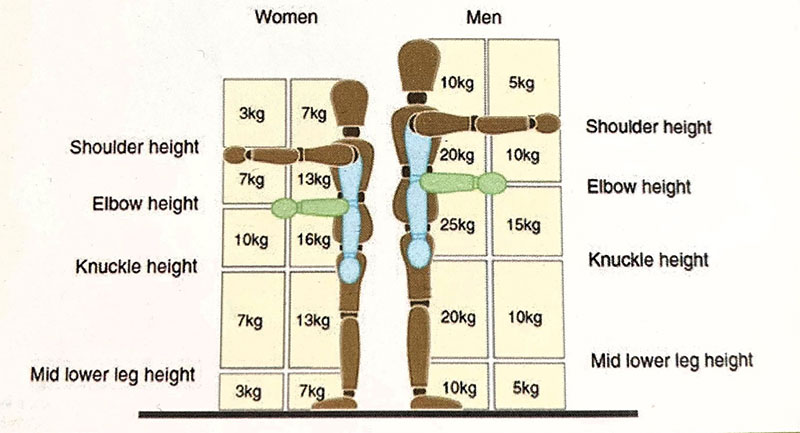
Taking the load off manual handling with Courtley training
Posted on April 19, 2024
One of our key training courses at Courtley Health and Safety is Manual Handling – Train the Trainer (which is FREE to Members). It’s a one-day, highly interactive course ideal for any organisation wishing to deliver their own manual handling training to staff. And it’s very comprehensive covering a range of topics from the consequences of poor manual handling to an employer’s legal requirements, from correct manual handling techniques to how to risk assess all manual handling tasks.
It’s a course for every sector too, not just construction. As well as bricklayers, think yoga teachers, and everyone in between. You will agree if you consider the definition of manual handling: “the act of moving something using the physical strength of your body, rather than using a machine.” It can involve lifting, putting down, pushing, pulling, carrying or moving a load, which can be an object, a person, or an animal. That’s everything!
And it relates to a person’s musculoskeletal system which provides form, support, stability and movement in the body. That’s also everything!
Lift like a toddler
In general, I believe we don’t take our musculoskeletal health seriously enough. Of accidents and injuries that keep people off work for more than seven days, a third of them are as a consequence of poor manual handling, that’s a phenomenal number. Of those, you might have contusions, crushed fingers, strained wrists and the like, but the main issue is damage to the lower back and that’s to do with improper manual handling. It’s often the case that we are asking the body to do things it wasn’t designed to do – reaching or stretching too far, bending at the waist when picking things up, sitting hunched over a desk for too long a period.

One of my favourite videos is of a child lifting a box, showing that lifting something should be ‘child’s play’, because they do it instinctively easily and properly, the correct stance with feet shoulder width apart bending at the knee before taking a firm grip. Check it out here. There’s also an office version where the toddler has swapped a hard hat for a shirt and tie.
Health and Safety is Common Sense with Discipline
The cornerstone, as with most, if not all, of good health and safety practice is the risk assessment. It encourages and guides you to suitable and sufficient control measures. For manual handling there are four steps with a handy memorable acronym, TILE, or as I prefer, LITE.
So that’s Load: considering the object or person that is being moved – it is heavy or bulky, hard to grasp, have sharp edges, is it a liquid or is hot, where’s the centre of gravity; Individual: there’s a myth in Health and Safety that 25kg is a safe weight to lift, it’s not. The phrase is “whatever the individual is comfortable with”. It’s because everyone is different, but different also on different days and different times of day. The thing about lifting any weight is that an individual’s capability is greater at desk height than at head height or ankle height and the difference between load and weight needs to be considered too. See the diagram below.

Task: what is it that you are doing, from stacking a pallet or sitting at a checkout? So, that’s thinking about what that task is, twisting, stooping, lifting high, lifting low and so on; and finally, Environment: what’s the floor like, trip hazards, the lighting or what are the weather conditions? For example, you could be carrying a sheet of plywood and it’s blowing a gale, which will make it more difficult, potentially impossible.
Course Takeaways
In future blogs I will write further about musculoskeletal health and the importance of movement because it relates to manual handling. On the completion of our Manual Handling Train the Trainer course (which is FREE to Members) you should be able to deliver your own bespoke training based on task analysis that aligns with current best practice.
This includes Manual Handling Regulations 1992 and associated legislation; reasons for managing manual handling risks within the workplace; principles of manual handling risk assessment; application of efficient movement principles to routine and non-routine loads, pushing, pulling and team handling, as well as the structure and function of the spine, risk factors for back pain and basic spinal biomechanics.
We also offer a 1/2-day Manual Handling Assessors course (also FREE to Members).
If you require advice or support, don’t hesitate to contact us on 0151 545 0497.
To book a course, click the links above or email us at [email protected].
